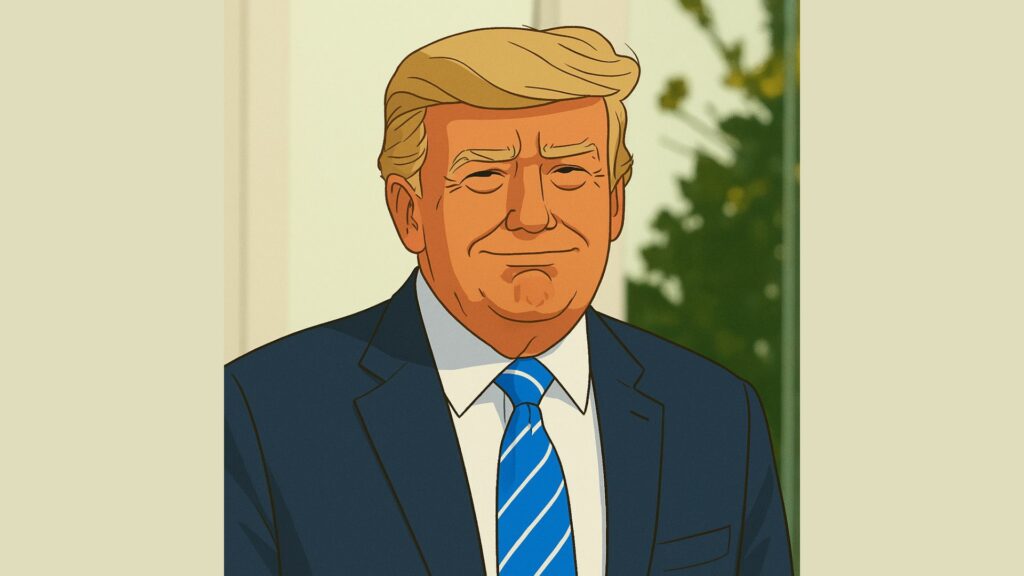President Trump is set to confirm a significant tariff decision today, April 2, 2025, as part of a broader strategy to pressure trading partners and reshape American trade.
The move has drawn strong reactions from global markets, with retaliatory steps already emerging. While tariffs do not target digital assets directly, they influence inflation, consumer spending, and investor behaviour.
As this economic uncertainty deepens, crypto markets are watching closely, caught between wider macroeconomic shifts and the search for renewed momentum.
Tariffs Fuel Economic Uncertainty and Global Tensions
Since January, the Trump administration has moved swiftly to impose tariffs on a wide range of imported goods. Steel, aluminium, and Chinese exports have already been hit with higher duties, while automobile imports face a 25% tariff beginning tomorrow.
US President Donald Trump has touted April 2 as a ‘Liberation Day’ to impose an array of new tariffs that could upend the global trade system. Here’s what to expect https://t.co/smb7SRrTPU pic.twitter.com/Tz5XI2iFV9
— Reuters Business (@ReutersBiz) April 2, 2025
Additional measures against pharmaceuticals and agricultural products are also expected. These policies, according to the White House, aim to reduce trade deficits and promote domestic industry.
But the global response has been far from quiet. Canada and Mexico are negotiating exemptions while also launching retaliatory tariffs. The European Union has announced phased measures that could eventually affect $28 billion in US exports.
China, meanwhile, has introduced tariffs on agricultural goods and energy, restricted technology imports, and hinted at a joint response with Japan and South Korea.
These actions are not just political signals. Economists warn that the real effect will be felt in prices.
Imported goods become more expensive, and as companies absorb higher input costs, these are passed on to consumers. Yale’s Budget Lab estimates that US GDP growth could slow by 0.6% in 2025 alone, with potential long-term losses of up to $110 billion a year.
Automotive tariffs are expected to hit particularly hard. Analysts project that vehicles assembled in the US could see an average price increase of $3,000. Foreign models may jump by as much as $6,000.
This could reduce daily output by as much as 20,000 vehicles, disrupting supply chains and employment across North America.
As prices rise, inflation becomes harder to manage. While central banks have welcomed recent signs of stabilisation, this round of tariffs could reverse those gains.
With inflationary pressure increasing, household budgets are strained, consumer confidence weakens, and investors grow more risk-averse. This has resulted in increased interest in short-term government bonds, signalling a shift toward safer positions.
Crypto Feels the Pressure as Risk Appetite Fades
Cryptocurrencies are not traded like physical goods, but they are deeply affected by the same forces. The idea that Bitcoin is immune to tariffs is a misunderstanding. What matters is how tariffs shape investor behaviour, inflation expectations, and confidence in economic policy.
Bitcoin has managed modest gains recently but remains well below its March peak of $100,000. Current price movements suggest uncertainty. While some have blamed tariffs directly, the data suggests crypto’s struggles pre-date today’s announcement.
For instance, inflows into spot Bitcoin ETFs remained strong during February, even as trade tensions intensified. That momentum has since faded.
Part of this cooling relates to unmet expectations. In 2024, Trump floated the idea of building a national Bitcoin reserve. Investors hoped for bold action, but the actual executive orders fell short.
By March, that enthusiasm had largely faded. Without a clear catalyst, Bitcoin has entered a period of muted growth.
Inflation is another key factor. In 2022 and 2023, surging inflation led investors to seek crypto as a hedge. But with inflation currently under 3% and holding steady, the need for alternatives has lessened.
Traditional assets like equities and property are becoming attractive again, particularly with interest rates projected to stay low.
Labour market data further explains the cautious tone. US job openings are at a four-year low, and Treasury yields have dropped significantly, reflecting lower growth expectations.
Investors are prioritising safety and liquidity over volatility and speculation. This has pulled capital away from high-risk assets like crypto.
Still, Bitcoin remains part of the broader economic conversation. If tariffs on essential goods such as medicine and food are confirmed and retaliation escalates, the resulting instability may once again push some investors toward decentralised assets.
However, any such movement is likely to be temporary without additional support from fiscal or monetary policy.
Another potential impact lies in regulation. Trump has suggested replacing income tax with tariff-based funding, possibly through a newly proposed External Revenue Service.
If that model moves forward, governments may begin scrutinising alternative revenue sources, including crypto holdings.
This could result in greater regulatory focus on digital assets, adding complexity for retail and institutional investors alike.
Conclusion
President Trump’s tariff decision today is not just a trade matter. It reflects a wider shift in how economic policy is being structured in the United States, with global consequences.
The move is already disrupting trade relationships, fuelling inflation concerns, and reshaping investor sentiment.
For crypto, the implications are more subtle but still significant. Digital assets are operating in a risk-off environment where investor caution is high and macroeconomic pressure is growing.
Bitcoin’s subdued performance reflects not only policy disappointment but also broader economic restraint. Unless inflation accelerates or central banks shift direction, crypto may remain in this holding pattern.
At the same time, today’s decision underlines why decentralised systems matter. As governments rework their tax systems and enforce new trade barriers, the appeal of independent, borderless financial tools may quietly grow.

